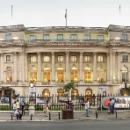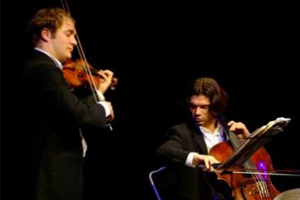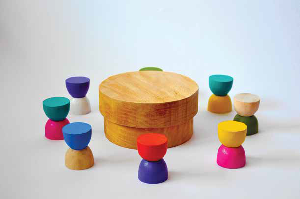
From art salons to international fairs
Contemporary art fairs are spread out on all continents and are developing longer lineups, a public that enjoys events that are more and more unconventional and performances that are more compacted and sophisticated. The increasing intense participation of private sponsors, the active involvement of galleries as representatives of the artist and the displayed works – become instruments that allow the user not just to find out something about someone, but also to get to know the life and the death of an artist, the stories of certain trends and movements, the expertise and the talent of some genius personality. They are also pushing the degree of knowledge and the capacity of message absorption at a higher level, through an enactment of realities seen through the contemporary society’s eyes.
The periodical cultural events such as the biennales and triennials have strong conceptual and scenographic features and they reinforce the scholastic side and the sophistications of specialized professions. The art fairs have a specific and immediate trade interest that the biennales don’t necessarily have. Yet, both events represent large scale institutional structures, conceived to present art works in an international context. Often they contain hundreds, even thousands of pieces belonging to various artistic categories, from the most traditional paintings and sculptures, to vanguard installations and post-modern video art.
Both structures have a history that goes back many decades and this provides more clarity to the profound transformation occurred in time and caused by the progressive globalization of the modern world.
Contemporary art has been expanding and gaining more and more weigh within the global economy, therefore the fair – as a commercial art exhibition enriched with collateral events, debates and conferences – was officially acknowledged to signal the transformation of the exhibition concept. On the other hand, it is impossible to challenge the debate on the boundary between exhibition and fair.
Without any doubt, the art fair is not just a dense circuit of information, events and satellite salons, but it is also the place where the relational capital on which the entire contemporary art system (relationships between professional, collectors and fans) is materialized in the most obvious manner.
Since the end of the 80s, the new wave of international exhibitions has created a very close connection between history and the economic, social, political and cultural development mechanisms (we could mention here some of the crucial events which left their mark on history: the end of the Cold War, the fall of the Berlin Wall, the Eastern European totalitarian regimes dissolution, the South African Apartheid abolishment, the Chinese market becoming free and its economic development, United Arab Emirates openness towards international tourism and India`s exponential growth). All these changes had a tremendous contribution to the expansion of the contemporary art boundaries (traditionally limited to the Western world), but are also trying to respond the questions related to the objectives of the major international exhibitions, on their role as global communication platforms.
——————————————————————————————————————————–
Continue reading in The Art of Living no. 16, an issue dedicated to contemporary art. DOWNLOAD









